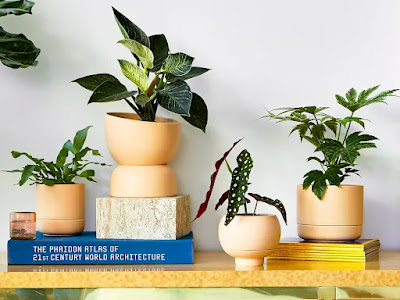Whetstone Flattening Plates: Essential Pieces in Your Knife Sharpening Arsenal
 |
| source: pexels.com |
If you have invested in high-quality professional knives, then you surely want to keep them in the best shape possible, sharp and precise. Sharpening using a whetstone is a century-old technique that requires a bit of practice and finesse, but once you master the skill you will enjoy the satisfying activity. However, after repeated uses, these become uneven and rutted. To restore the sharpening surface, you will need a whetstone levelling plate. What exactly are these tools and how do use them?
What is a Whetstone Flattening Plate?
A whetstone flattening plate, also known as a whetstone levelling stone or lapping stone, is a tool used to maintain the flatness of sharpening stones, also called whetstones. Whetstones are used to sharpen and hone the edges of tools and blades. Over time, with regular use, these stones develop grooves, uneven surfaces, and dips due to the abrasive action of sharpening. A professional-grade whetstone flattening plate, typically made from a hard material like diamond or silicon carbide, is used to restore the flat, even surface of the whetstone, ensuring consistent and effective sharpening results.
Why Use a Flattening Stone?
Maintaining Sharpening Efficiency
A flat whetstone provides an even sharpening surface, ensuring that the blade or tool being sharpened makes consistent contact with the stone. This uniform contact is crucial for achieving a sharp, precise edge.
Prolonging Whetstone Life
Regular flattening prevents deep grooves and uneven wear patterns from developing, which can lead to the premature degradation of the whetstone. By keeping the surface even, the lifespan of the whetstone is extended.
Improving Sharpening Accuracy
An uneven whetstone can cause inconsistencies in the sharpening process, leading to an uneven edge on the blade. A flattened whetstone ensures that each stroke contributes uniformly to the sharpening process.
Enhancing Safety
A flat sharpening stone reduces the risk of the blade catching or skipping, which can lead to accidents. A smooth, even surface allows for controlled, predictable sharpening strokes.
Choosing the Right Flattening Plate
When selecting a flattening plate, there are several factors to consider:
• Abrasive Material: The type of abrasive material used on the flattening plate will affect its performance and durability. Diamond grit is the most durable and effective, but also the most expensive. Silicon carbide and ceramic are less expensive alternatives that still offer good performance.
• Size: The size of the flattening plate should match the size of the whetstones you plan to flatten. Larger plates provide more surface area for flattening, making the process faster and more efficient.
• Durability: Consider the durability of the flattening plate, especially if you plan to use it frequently. Diamond plates are generally the most durable, while ceramic plates may require more careful handling to avoid damage.
How to Use a Flattening Whetstone?
 |
| source: pinterest.com |
Using a whetstone flattening plate is a straightforward process, but it requires attention to detail to ensure the best results. Here’s a step-by-step guide on how to use it:
Step 1: Preparation
Wet the Whetstone and Flattening Plate: Submerge the whetstone in water for about 10-15 minutes if it’s a waterstone. This helps to saturate the stone and makes the flattening process more effective. If the flattening plate requires lubrication, apply water or a recommended lubricant.
Clean the Work Area: Ensure that your working surface is clean and free from debris. This helps in achieving an accurate and even flattening process.
Step 2: Mark the Whetstone
Draw a Grid: Using a pencil, draw a grid pattern on the surface of the whetstone. This grid will act as a guide to show you where the high and low spots are as you flatten the stone.
Step 3: Flattening Process
Place the Whetstone on the Flattening Plate: Position the whetstone on top of the flattening plate. Hold the whetstone firmly to prevent it from slipping during the process.
Rub in a Circular Motion: Using moderate pressure, rub the whetstone against the flattening plate in a circular or figure-eight motion. Ensure that you cover the entire surface of the whetstone to achieve even wear.
Check the Grid: Periodically stop and inspect the pencil grid. The areas where the pencil marks have worn away are the high spots, while the remaining marks indicate low spots. Continue flattening until the entire grid pattern is removed, indicating a flat surface.
Step 4: Final Steps
Rinse the Whetstone: Once the surface is flat, rinse the whetstone thoroughly to remove any abrasive particles. This prevents contamination during sharpening.
Dry the Whetstone and Flattening Plate: After rinsing, dry both the whetstone and the flattening plate. Proper drying prevents water damage and prolongs the life of both tools.
Tips for Effective Flattening
• Consistency is Key: Regular flattening is essential to maintain the efficiency of your whetstones. Depending on usage, flatten your stones after every few sharpening sessions.
• Use Both Sides: If your flattening plate is double-sided with different grits, use the coarser side for initial flattening and the finer side for a smoother finish.
• Proper Storage: Store your flattening plate in a dry, clean place to avoid damage. Some plates come with a storage case for added protection.
• Pressure and Technique: Apply even pressure across the whetstone to avoid creating new uneven spots. Use a steady, controlled motion to ensure uniform wear.
• Inspect for Flatness: Occasionally check the flatness of your whetstone with a straight edge or a level. This ensures that your flattening technique is effective.
Takeaway
A whetstone flattening plate is an essential tool for anyone who regularly sharpens tools and blades. By maintaining a flat and even sharpening surface, it ensures that your whetstones remain effective and last longer. The process of using a flattening plate is simple but requires regular attention to detail. By following the steps outlined above and incorporating good flattening practices, you can achieve consistent, sharp results and prolong the life of your whetstones.



Comments
Post a Comment